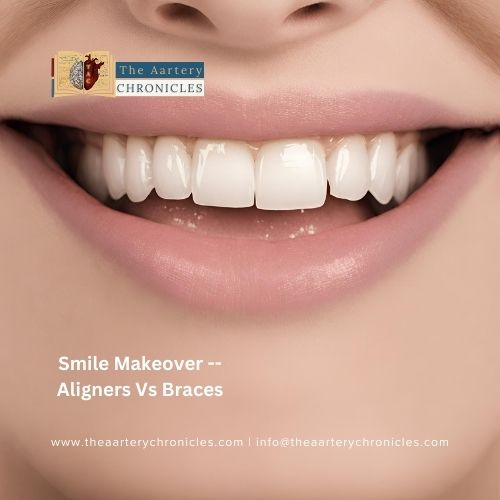
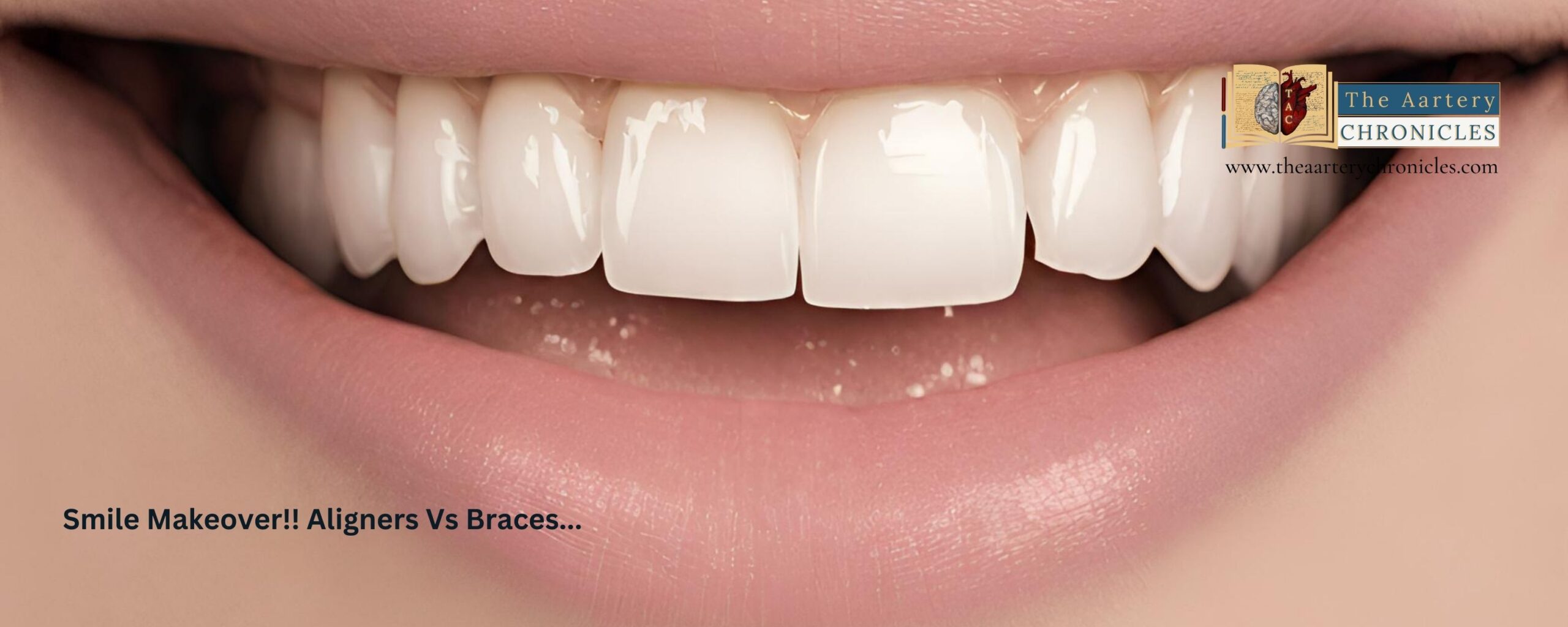
Smile Makeover Showdown: Braces vs. Aligners
Braces and aligners are popular orthodontic treatment options to help straighten the teeth. The science of orthodontics focuses on diagnosing, preventing, and treating several dental concerns that include crooked teeth, a misaligned jaw, and an abnormal byte pattern. [1]
In order to improve both oral health function and aesthetics, orthodontic therapy involves repositioning or straightening teeth. It also helps to preserve the overall dental health of the teeth, gums, and jaw joints throughout time by dispersing the biting pressure uniformly all over the teeth. [2]
Orthodontic therapy undoubtedly enhances quality of life, but the question of “Which orthodontic treatment is right for me?” is the one that remains unanswered. So, let’s dive into the pros and cons of braces and aligners that would help draw a better conclusion to the aforementioned question.
What Are Braces?
Dental braces are conventional, versatile, and the most popular orthodontic therapy that helps straighten the teeth and addresses a variety of functional and aesthetic dental concerns, including crowding, crookedness, gaps between teeth, and malocclusion. [3,4]
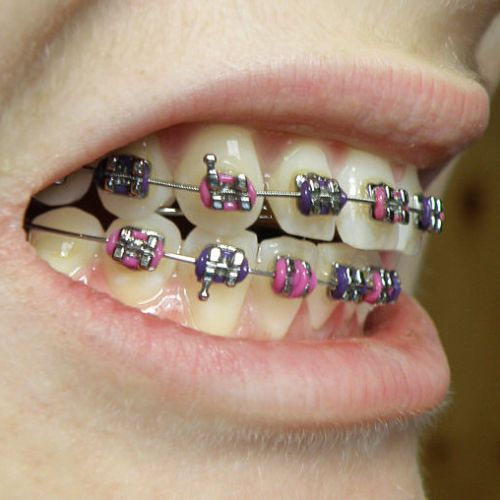
Braces
Conventional braces comprise brackets affixed to every tooth and wires secured with metal or elastic ligatures. [4]
There are several different types of braces, and the one that is most appropriate for a person depends upon the dental issue they are facing, the severity of their condition, and their personal preferences.
- Metallic braces
- Ceramic braces
- Lingual braces
- Self-ligating braces [3]
What Are Aligners?
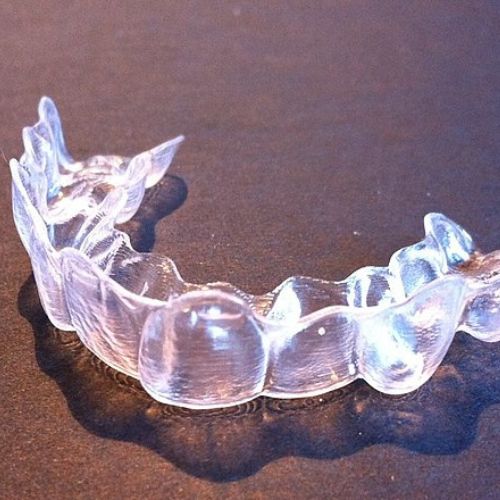
Aligners
- Aligners sometimes referred to as invisible braces, are a customized set of thermoplastic trays that work similarly to braces by applying pressure to misaligned teeth in order to correct the alignment. [3,5]
- These trays are customized to fit over an individual’s teeth and over the course of several months, the pressure from the aligners moves the teeth into the desired alignment. [3]
Pros and Cons of Aligners
What Are the Pros of Aligners?
- Cosmetics: Aligners are virtually invisible because of their transparency, which gives them the moniker “invisible braces.” Due to their inconspicuous nature compared to traditional braces, aligners are more valuable cosmetically. [4]
- Comfort: Aligners are a more convenient and comfortable treatment option since they are removable in nature, as opposed to braces, which are a fixed treatment modality. [3,4]
The fact that aligners don’t have metal brackets or wires in the mouth further makes them a more pleasant alternative than metal braces.
- Convenience: The effectiveness of aligner therapy is demonstrated by its ease of convenience since it necessitates significantly reducing the number and duration of dental appointments, emergency visits, and overall chair time. [6]
In aligner therapy, patients are required to visit an orthodontist within a 10–12-week interval, in contrast to 4–6-week intervals that are inevitable in fixed braces treatment. [8]
- No Dietary Restrictions: It is worry-free to eat anything you want because an aligner tray can be removed. To avoid damage and irritation, those wearing braces should avoid chewy or sticky meals. [3]
- Oral Hygiene: Oral hygiene is easier to maintain with removable aligners as opposed to braces, where brushing and flossing can prove to be tricky around archwires and brackets. [7]
In addition to promoting improved oral hygiene and periodontal health, aligners also reduce plaque accumulation and the emergence of white spot lesions. [7]
What Are the Cons of Aligners?
Some disadvantages of aligners include:
- Compliance: Compliance is the key when it comes to aligner therapy, as aligners need to be worn for at least 22 hours every day in order to be effective and get the desired result. In patients with low compliance, treatment time tends to increase, and the outcome may be highly compromised. [3,7]
- Not suitable for severe and complex cases: Aligners are convenient in mild to moderate cases of crowding, diastema, posterior expansion, intrusion of one or two teeth or, lower extraction cases.
But certain movements that are harder to accomplish with aligners are:
- Severe rotations
- Extrusions
- Severe crowding
- Jaw misalignment (class II and class III malocclusion) [4,8]
- Root Resorption: Root resorption is one of the risks associated with aligner therapy, though the incidence and severity may be lower as compared to a fixed treatment method. [8]
- Expensive: Aligners are more expensive than other orthodontic treatment modalities, so the patient must consider the significant costs involved. [8]
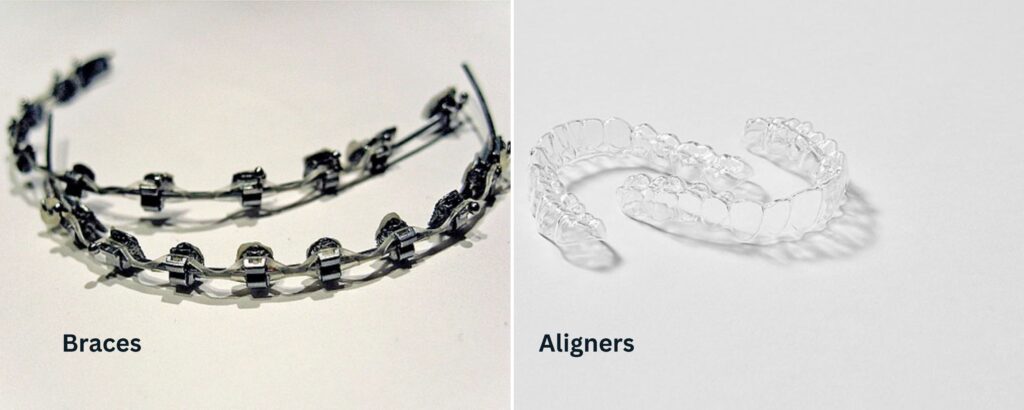
Pros and Cons of Braces
What Are the Pros of Braces?
The major advantages of conventional braces as compared to aligners are:
- Versatility: Compared to aligners, braces offer greater versatility. They handle a variety of complex and severe orthodontic issues, such as:
- Severe crowding
- Severe rotation
- Anteroposterior discrepancies
- Severe spacing
- Cross-bite cases
- Open bite cases [8]
- Precision: Teeth can move more precisely with braces because they apply and endure greater pressure than aligners. Aligners may work just as well for milder cases of misaligned teeth. However, for those with more complex needs, braces work better at moving the teeth into the desired positions. [8]
- Less Compliance: Because the braces are bonded to teeth, wearing them on a regular basis won’t require much discipline from a patient’s end, and this may prove advantageous to people who worry they won’t be able to consistently adhere to the aligner’s 22-hour guideline. [7]
- Multiple options: There are several different types of braces available that are far more covert and discreet than conventional, traditional braces with metallic brackets. Some of the options include:
- Ceramic braces: Sometimes referred to as clear open braces, use brackets that are either clear or tooth-coloured.
- Lingual braces: are affixed behind the teeth as opposed to in front.
- Self-ligating braces: Compared to regular braces, these braces are less apparent because they have fewer brackets and no rubber bands. [3]
What Are the Cons of Braces?
Some disadvantages of braces include:
- Appearance: Braces are far more noticeable and visible than aligners. The unesthetic appearance of braces may act as a deterrent for individuals looking for a cosmetically pleasing treatment modality. [4,8]
- Dietary Restrictions: Foods that are chewy, sticky, or hard can snag on the metal wires and damage them, so one needs to be mindful of the food they consume in order to prevent it from getting logged in the braces. [3]
- Discomfort: In addition to applying pressure to move teeth, braces can also create pain and discomfort in your mouth. Sharp edges on metal wires and brackets have the potential to prickle, graze, and irritate oral tissues. [8]
- Maintenance: In contrast to clear aligners, braces are an affixed treatment modality. They remain in place till the end of the treatment, and this implies that maintaining oral hygiene and eating habits while wearing braces will require more care than usual. [8]
- Increased chair time: Braces require significantly a greater number of dental appointments and emergency visits because of either breakage of brackets, an archwire injury or ligature-related injuries. [6]
- Root Resorption: Fixed orthodontic appliances like braces can give rise to root resorption by causing excessive pressure at the apical level. [8]
Conclusion:
The decision between braces and aligners depends on individual preferences, dental issues, and lifestyle. Understanding the nuances of each option aids in making an informed choice for a successful smile makeover
- Future of Orthodontics—A Systematic Review and Meta-Analysis on the Emerging Trends in This Field - PMC (nih.gov)
- Orthodontic treatment - Oral Health Foundation (dentalhealth.org)
- Braces: Types & How They Work (clevelandclinic.org)
- A comparison of treatment effectiveness between clear aligner and fixed appliance therapies - PMC (nih.gov)
- Clear Aligners: Between Evolution and Efficiency—A Scoping Review - PMC (nih.gov)
- Comparative time efficiency of aligner therapy and conventional edgewise braces - PMC (nih.gov)
- Factors Influencing Patient Compliance during Clear Aligner Therapy: A Retrospective Cohort Study - PMC (nih.gov)
- Orthodontic Treatment with Clear Aligners and The Scientific Reality Behind Their Marketing: A Literature Review - PubMed (nih.gov)

Author: Dr. Anjali Singh
BDS [KGMC, Lucknow]
- Medicine and Diseases
- Nutrition and Diet
Lorem ipsum dolor sit amet, consectetur adipiscing elit. Ut elit tellus, luctus nec ullamcorper mattis, pulvinar dapibus leo.
















